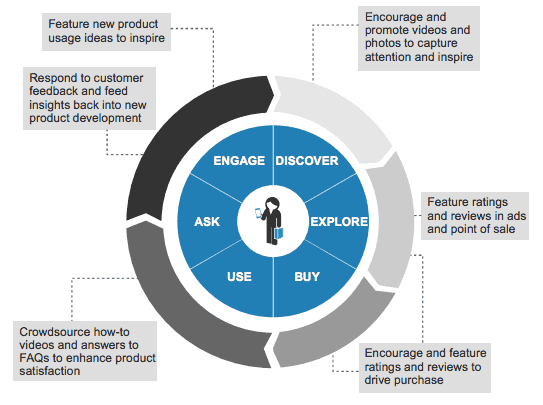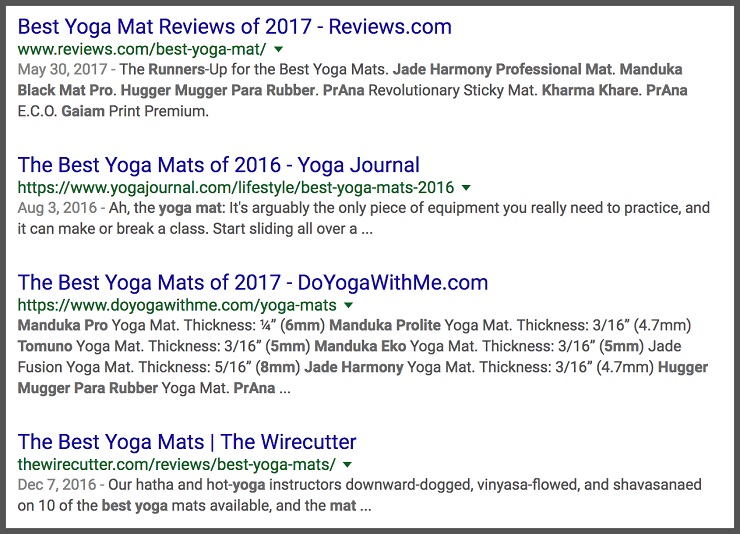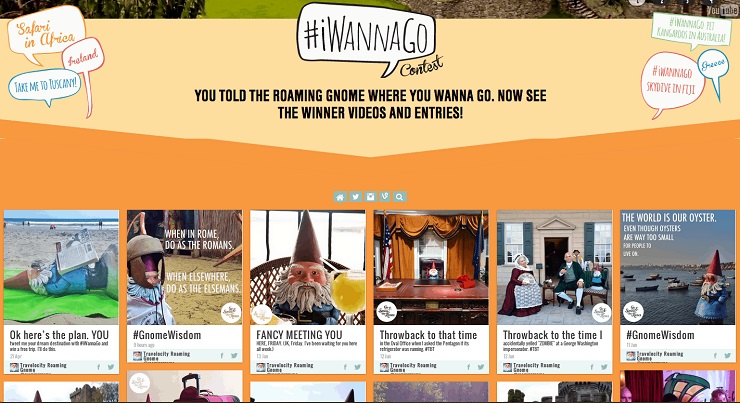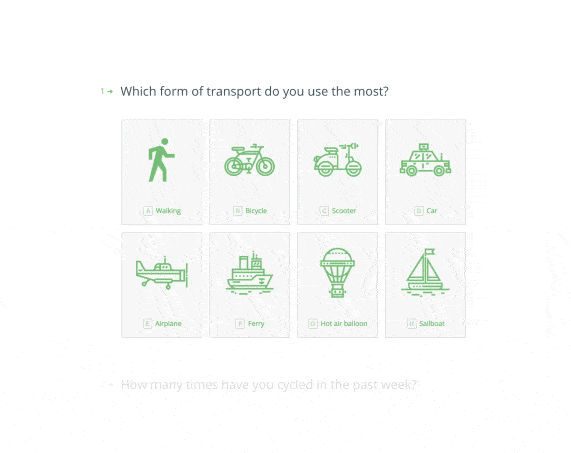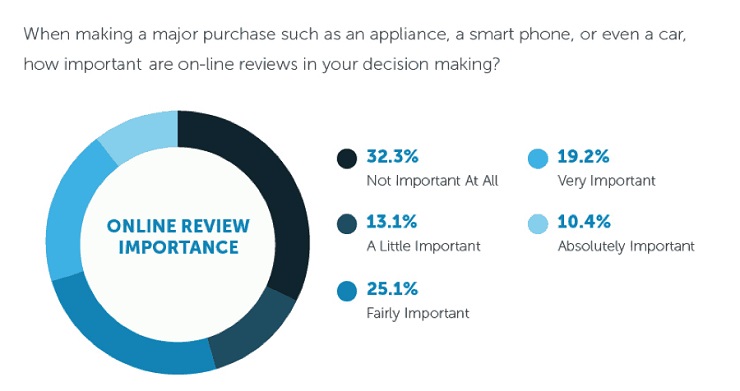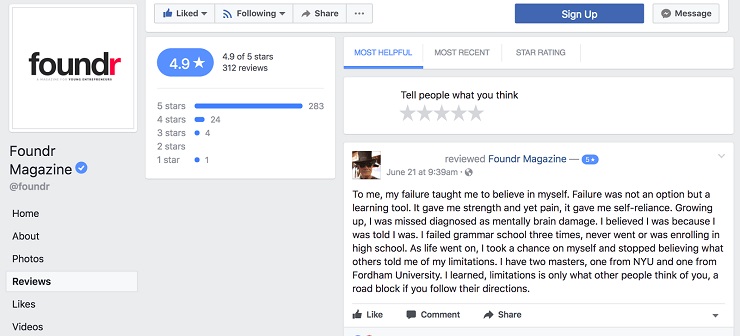User-generated content is one of the fastest ways you can make your business an authority and establish a trusting, loyal consumer base. If you own a business that is struggling to gain notoriety, the following is a powerful strategy to get you there.
Other people’s opinions are the most powerful marketing tool. Consider that 83% of people make purchase decisions based on recommendations from friends, family, and peers.
As an entrepreneur scrambling to gain authority among your audience in a crowded marketplace, how do you leverage the positive opinions of others? One of the strongest and easiest ways is with user-generated content. Here’s how.
Why User-Generated Content is So Powerful
User-generated content is defined as exactly what it sounds like: content created by a brand’s users. That content can be anything from images to videos to blog posts, and the user could be a customer, site visitor, or social media follower.
User-generated content (UGC) is the most straightforward way to infuse social proof into your content and marketing. It’s not the copy that you pay a copywriter to create. It’s not the images that you hire a photographer to capture.
User-generated content is content contributed by a real person, i.e., someone whose job is not selling products.
The fact that this content is created and shared by a peer (and not the brand itself) helps consumers feel confident that the content is unbiased. That’s why it’s so powerful.
Which type of user-generated content is best for your brand? The answer depends on a whole host of factors. There’s no hard and fast playbook on what user-generated content will connect best with your audience. For one, take a look at what you’re selling. Most companies that leverage user-generated content opt for images and videos, given the power of visual content.
Other types of user-generated content include:
- Reviews and ratings
- Comments
- Guest blog posts
- Social media posts
- Public forums
Given the variety of UGC, the question isn’t as much what type is best for you, but rather, what type is best for each stage in the buying process. We’ll go into more detail about this below.
Where User-Generated Content Fits Into the Buying Process
The inbound marketing cycle from a seller’s perspective is a simple one: Attract, convert, close, delight.
From the consumer’s perspective, this cycle looks a little different and more complicated. As they make purchase decisions, consumers will discover, explore, buy, use, ask about, and engage with your product and brand.
Let’s break down the phases in this cycle.
- In the Discover phase, consumers may not be aware of your product or service, and they’re likely actively searching for solutions to a problem.
- In the Explore phase, consumers are aware of your brand and are looking for ways in which you solve their problem(s), as well as comparing your product or service to others.
- The Buy phase is self-explanatory: cha-ching.
- The Use phase is also straightforward, as consumers will use and experience your product or service.
- The Ask phase could involve consumers inquiring about alternative uses or expanded product lines, or participating in consumer-based forums.
- In the Engage phase, consumers interact directly with your brand through social media, online communities, direct feedback, or additional purchases.
So, where in this cycle should you leverage user-generated content? Well, everywhere.
As you can see from the image above, produced by Forrester Consulting, user-generated content can be used in every stage of the Consumer Lifecycle. The type of user-generated content depends on what would be useful for each stage.
For example, videos and images created by users can help get your business’s name out there, enhancing a consumer’s Discover phase. On the other hand, a consumer in the Use phase wouldn’t need to be introduced to your brand or persuaded to buy your product; they’d instead be seeking out consumer forums and conversations about the various uses of your product.
Users are actively creating and seeking user-generated content throughout the entire purchase process. Because of this, it’s important to diversify how you ask for, collect, and use UGC. Let’s look at some ways to use various user-generated content at the different buying stages.
Driving Brand Awareness With User-Generated Content
As consumers reach the Discover and Explore stages of the buying process, brand awareness is really what you’re going for, and UGC can play a big part in this phase.
Out of the top five ways that consumers discover new brands, three could potentially involve user-generated content—search engines, social networks, and consumer review websites. Social networks and consumer review websites are pretty straightforward, as they feature content and media created by and for consumers. But how are search engines linked to user-generated content?
Well, Google gives way more clout to user-generated content than to content created by brands and businesses. In fact, 25% of all search engine results for the world’s top 20 brands are links to user-generated content.
Consider the last time you Googled a big-name brand, say Nike or Apple. Sure, the first few results that pop up are most likely the brand’s website and social media pages, as well as links to local stores. But, after that, you’ll probably see links to sites like Yelp, YouTube, and possibly a guest blog or two.
Let’s look at another example. Instead of a brand name, let’s Google a basic product. Let’s say I was in the market for a new yoga mat, and I search “best yoga mat.” Here are the top four results, which happen to all be user-generated content.
Reviews.com is a popular social review website. The Yoga Journal, Do Yoga With Me, and The Wirecutter are consumer-oriented blogs that review products. Note that some of these blogs and media sites we’re talking about generate profit and income for the writers, either through ad, subscription, or affiliate marketing revenues. But the key distinction here is that brands are not creating or paying for the reviews.
I’m sure there’s a ton of content—product descriptions, marketing copy, social media posts—created by these yoga mat brands themselves that use the words “best yoga mat.” In fact, I bet there’s way more brand-generated than user-generated content out there. Regardless, Google prioritizes user-generated content over anything that even the top brands have created. The connection between SEO and user-generated content is huge and undeniable.
Building up your social authority takes time, and rightfully so, as consumers don’t (and shouldn’t) trust just any content they stumble across. If you’re looking to leverage user-generated content to skyrocket your brand’s SEO, ask your loyal consumers to talk about your company online. (We discuss reviews specifically below.) Whether on social media, YouTube, review sites, or personal blogs, any third-party conversation about your company can help improve your position on search engines.
Increasing Brand Engagement: Get Consumers Talking About You!
So, you’ve got the consumer’s attention. Now you need to engage them as they complete the Explore stage of the buying process.
User-generated content not only bolsters social proof, but also encourages existing customers to participate as bloggers, copywriters, or photographers, creating an engaged community around your brand. You can help create this community in a couple different ways.
For one, consider conducting a campaign focused around user-generated content. Encourage your audience to participate by sharing images, video, and/or reviews on their own social channels and linking to yours via hashtag or account handle. By doing this, you’ll not only encourage engagement among your consumer base, but also ensure that your name is heard by those in your consumers’ social circles—people you might not have otherwise reached.
Take Travelocity, for example. For the chance to win a $30,000 vacation, Travelocity encouraged its audience to share images of their dream vacation and use the hashtag #IWannaGo. This UGC-focused campaign has been their most successful to date, engaging more than 25,000 consumers and garnering over 30 million impressions. That sort of engagement through a typical marketing or ad campaign would’ve cost way more than the $30,000 vacation.
Sites like Heyo, TagBoard, Keyhole, and Yotpo can make collecting user-generated content super easy, all while engaging fans, collecting followers, and boosting sales. If you’re interested in a more elaborate (and expensive) social scheduling tool that also helps aggregate user-generated content, check out Curalate or Hootsuite. Working within a tight budget? Simply tracking a hashtag or commenting on a photo would do the trick.
Another way to engage your audience with user-related content is by creating reports, white papers, and long-form content with the help of your users. The engagement in this respect is two-fold:
- Asking your consumer base to participate by providing opinions or feedback allows you to stay in sync with your current customers.
- Your potential consumers will immediately trust your content, knowing that it was derived from “fellow” consumers and not fluffed by paid copywriters.
I actually followed this strategy when compiling a lead magnet for my business, and it’s been my most successful lead generator to date.
My business, a pop-up consignment event, isn’t a familiar concept to everyone. Because of this, I asked my past and current clients to help compile a list of tips and advice to share with my new consignors. I incentivized participation by pairing my “ask” with a contest on my Facebook page giving away shopping credit.
The outcome was better than I could’ve ever expected. Not only did my clients supply advice that I would’ve never considered, but the response from my potential and new clients was overwhelmingly positive simply because the insight was provided by their peers. Like I said above, offering this content in exchange for emails did wonders for my business.
Collecting user-generated content for reports, white papers, or blogs isn’t tough. To collect data for free, try a tool like Google Forms, Typeform, or Survey Monkey. If you’re looking to publish a scientifically backed study, do some research on survey design so that you can be sure your data holds up.
User-generated blogs or customer stories are another content option. If you’ve got a blog, consider asking your customers for a success story involving your product—sort of like a review, but more personal and in-depth. Help Scout, a customer service software company, has found that sharing customer stories on their blog has helped get their users involved and gather priceless feedback about their product.
How User-Generated Content Boosts Conversions and Sales
Ah, the Buy stage. The most important stage for both business and consumer, and where user-generated content comes most in handy.
While all types of user-generated content—images, video, blog posts, social media—can help convert users and make sales, there’s one type of UGC that stands out in effectiveness and influence: the consumer review.
We touched on reviews above, but more in the light of SEO and general brand awareness. At the Buy stage, consumer reviews and testimonials play a whole different role. At this stage, they can affect your bottom line.
According to a study by Moz, 68% of consumers said that online reviews affect their purchase decision.
And just as one positive review can tip a consumer over the edge, one negative review can send them tumbling back to square one.
Companies must pay attention to the social reviews and chatter happening online. If you haven’t already, create profiles for your business on review sites like Yelp, TripAdvisor, Angie’s List, OpenTable, or whatever site makes the most sense for your business. Give your consumers a forum to discuss your organization. Ensure that your social accounts are open for commentary and review, too.
Complete your profiles with the correct branding and imagery, and ensure that your name remains consistent, as this can help search engines find your business. Respectfully ask that your consumers engage with these sites and leave honest feedback. Here are a few ways to do so:
- Link to your online review profiles on your website, email signature, and social media profiles
- Include in your product packaging a direct ask for online feedback or reviews
- If you interact with your consumers directly (say you provide a direct service or perhaps speak one-on-one), request that they provide feedback online
- Once in awhile, post a link to the online review sites on your social media accounts
- Consider giving away a small incentive for leaving feedback
Consider these sites part of your social media repertoire, and respond to reviews if necessary. If you’re not setting the tone when it comes to your company’s social reviews, an unhappy consumer or competitor will do it for you. Then, they’ll not only have a say about your social presence but also your bottom line.
User-Generated Content Will Improve Your Business
User-generated content is a powerful way to grow and expand your business. Many marketing campaigns that leverage user-generated content are conducted with the end goal of building awareness, increasing engagement, and boosting conversions—and rightfully so, given how impactful it is.
I mean, check out some of these statistics:
- Brand engagement increases an average of 28% when users are exposed to a combination of user-generated content and professional content.
- User-generated video content on YouTube gets 10x more views than content created and uploaded by the actual brand.
- 71% of consumers feel more comfortable buying a product after researching user-generated content reviews.
And that’s just the tip of the iceberg. User-generated content is extremely effective, but it isn’t just about marketing, especially for entrepreneurs.
User-generated content gives you, a small business looking for ways to learn and grow, unique insight into the minds of your consumers. When your users share content with their audience (and with you), they’re giving you an opportunity to learn from them. Take advantage of feedback and criticism that could otherwise cost you hundreds in focus group fees.
How are these users perceiving your product and your company? How are they using your products? What are the common misconceptions or struggles your users are having? Are they presenting you with new benefits or value propositions that you may have not yet considered?
As you collect and employ user-generated content, keep your research and development team in the loop. Sometimes, you can be so close to your business that you fail to see potential innovations or improvements.
How have you leveraged user-generated content in your marketing, promotional, or research? Have you tried a strategy that we didn’t mention? How has your audience responded? Share with us in the comments below!

